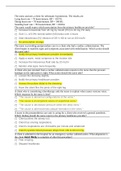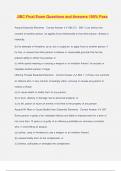Summary
Samenvatting + lijst examenvragen parasitologie prof. Maes
Ook lijst van examenvragen op het einde.
Oranje bolletjes = minder balngrijk
[Show more]
Preview 10 out of 220 pages
Uploaded on
January 30, 2024
Number of pages
220
Written in
2022/2023
Type
Summary
Institution
Universiteit Antwerpen (UA)
Education
Diergeneeskunde
Course
Parasitologie
All documents for this subject (17)
$17.82
100% satisfaction guarantee
Immediately available after payment
Both online and in PDF
No strings attached
PARASITOLOGIE




